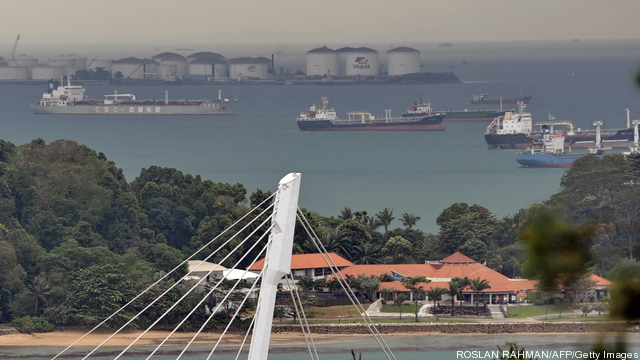
It’s telling that a panel discussion about using technology to reduce the environmental impacts associated with Canadian oil sands development ended up mainly being about dire market access issues impacting producers.
At the FT Global Investment Series: Focus on Canada conference held in New York City this week, corporate executives were clearly concerned about reducing greenhouse gas emissions from oil sands projects, but they were also very concerned about the billions of dollars being lost from commodity price differentials between Canadian heavy oil and other grades.
Harbir Chhina, Executive Vice President, Oil Sands at Cenovus Energy described market access as his company’s number one issue right now, saying Cenovus is moving about 40,000 barrels of crude per day via tidewater because they can earn significantly more money per barrel.
Cenovus currently receives about $25 to $30/bbl more for the crude it moves from British Colombia to refineries mostly in California, though some has also gone to Asia. “If we reach tidewater, we can get closer to Brent or Maya pricing,” a company spokesperson said in an email. Chhina told Breaking Energy the company is currently maxing out its Transmountain Pipeline shipments at 11,500 b/d. Transmountain currently runs from Strathcona County (near Edmonton), Alberta, to a marine loading facility in Burnaby, BC. The pipeline’s capacity is 300,000 b/d and operator Kinder Morgan has proposed expanding this to 890,000 b/d.
During his remarks, Chhina said Cenovus will be producing more crude than the US can take and as a result Asian markets will be required in the future. The company has a production target of 1 million b/d by 2021, which includes partner ConocoPhillips’ share. On the sidelines of the event, Chhina confirmed his company has sent test loads of crude to Asian refiners, who need to run several approximately 100,000 bbl batches in order to determine specific volumes of finished products that can be produced from a given grade. Once a refiner knows how much gasoline, diesel, etc. it can generate, a purchase contract can be worked out.
When asked about challenges the industry is facing, Matt White, President of Praxair Canada, an industrial gas supplier, said companies “need to monetize dry gas,” and that takes infrastructure.
For its part, Cenovus has roughly 150 million Btu per day of producing gas assets that it might sell when the market strengthens. The company told Breaking Energy last November during a tour of their Christina Lake facility it wants to reach equilibrium with regard to gas production and consumption. Chhina said on the sidelines of the conference this week this is still part of their strategy, “but don’t want to sell at these prices.” The NYMEX April natural gas contract was trading at $3.90/MMBtu Friday morning.
While getting increasing volumes of heavy oil to high-value markets is a priority, reducing greenhouse gas emissions and improving the efficiency and sustainability of oil sands operations is also a major initiative. Praxair and Cenovus are working to develop a steam generating process that burns natural gas with pure oxygen as opposed to air, which is 78% nitrogen and contains carbon dioxide along with other components. Burning methane with pure oxygen to generate the steam used in Steam Assisted Gravity Drainage – a common in situ production method – is not only cheaper, but would reduce GHG emissions, said Chhina.
The panel pointed out that with oil prices currently higher than historical averages, profit margins are also higher, which allows companies to invest more heavily in R&D. Advancements in technology have helped improve the operational efficiency of oil sands projects and reduce emissions at many of them. “We just finished the first inning,” said Chhina and technology will continue to reduce the environmental impacts associated with developing Canada’s oil sands.
